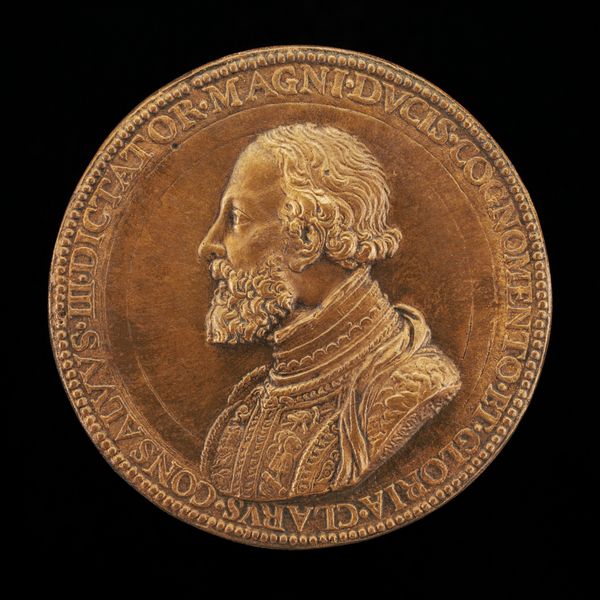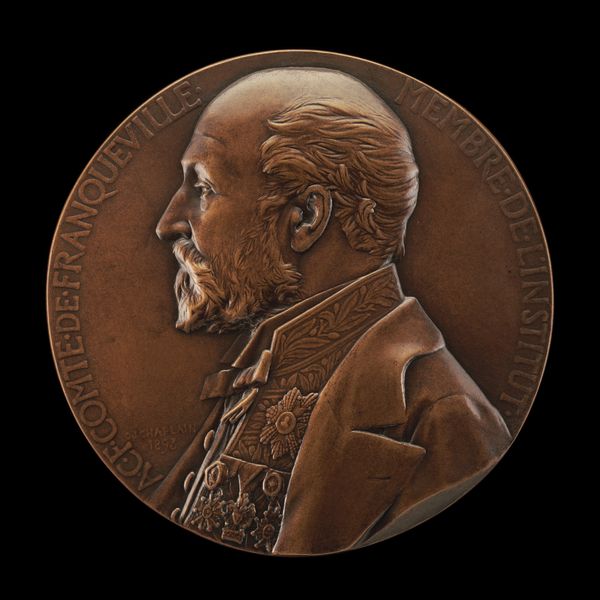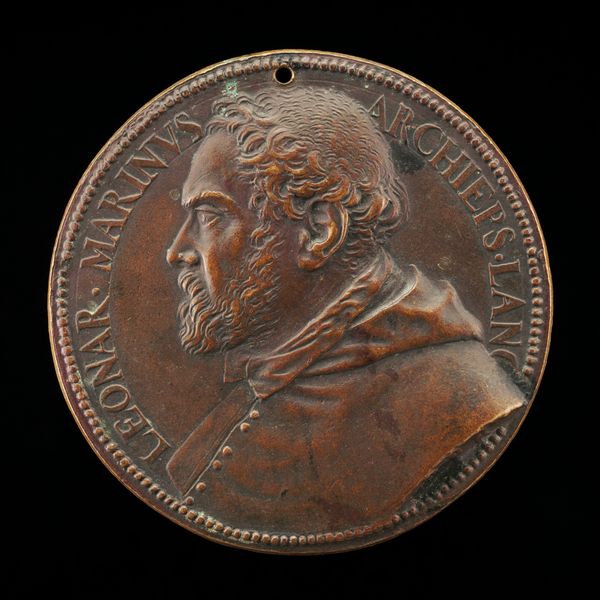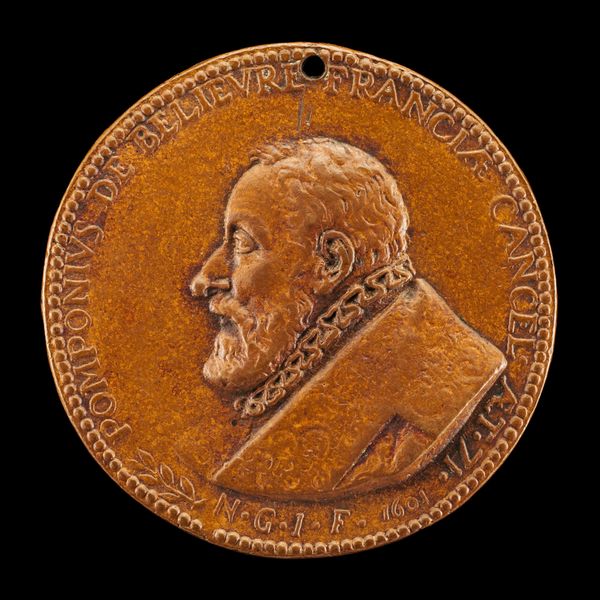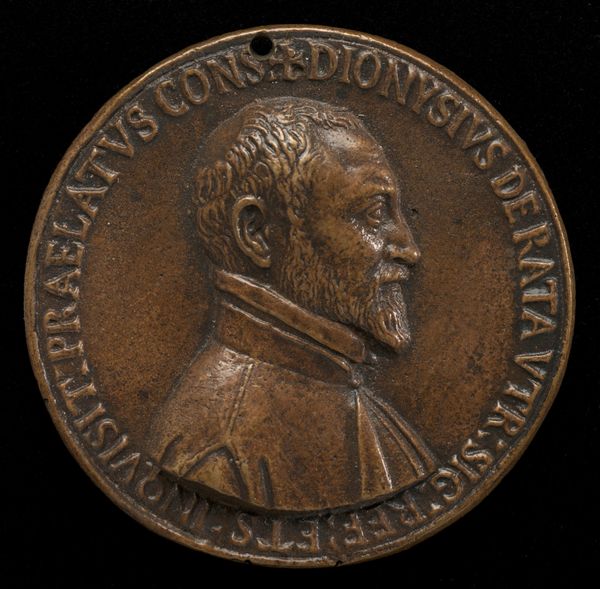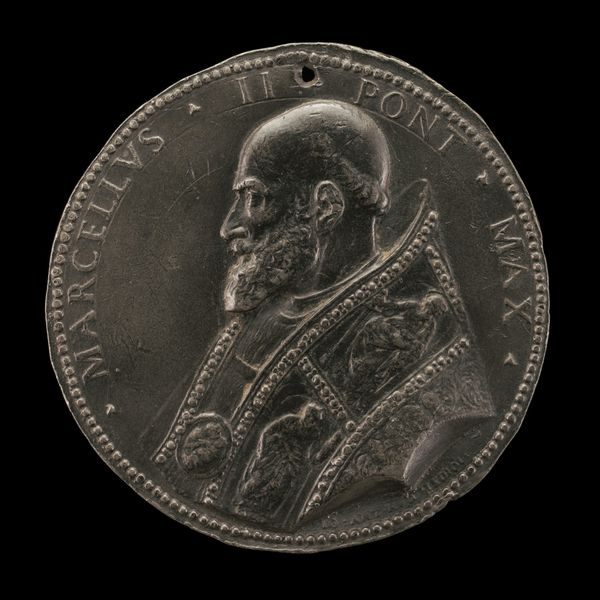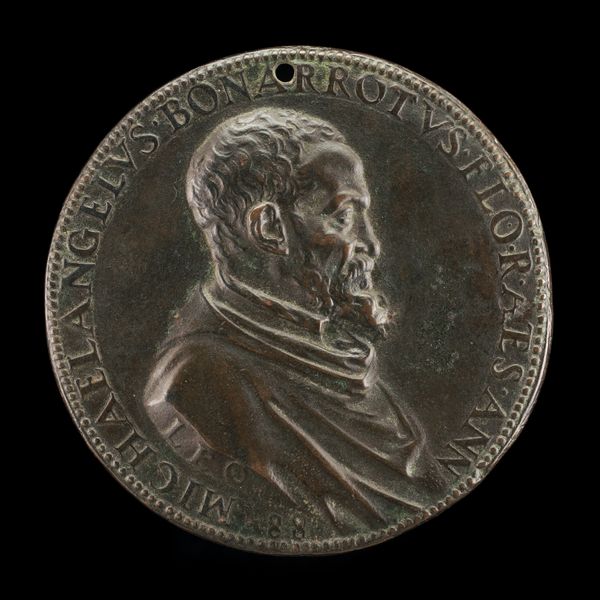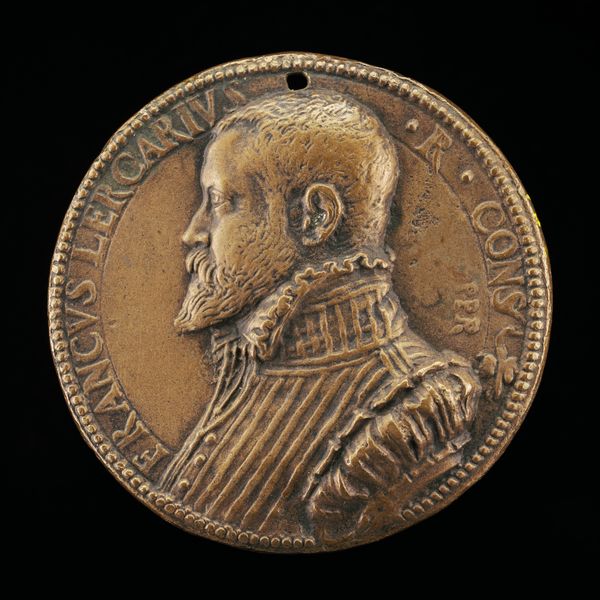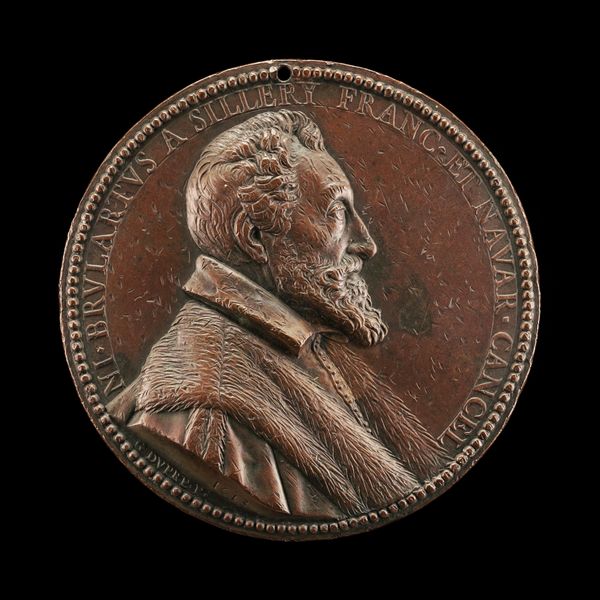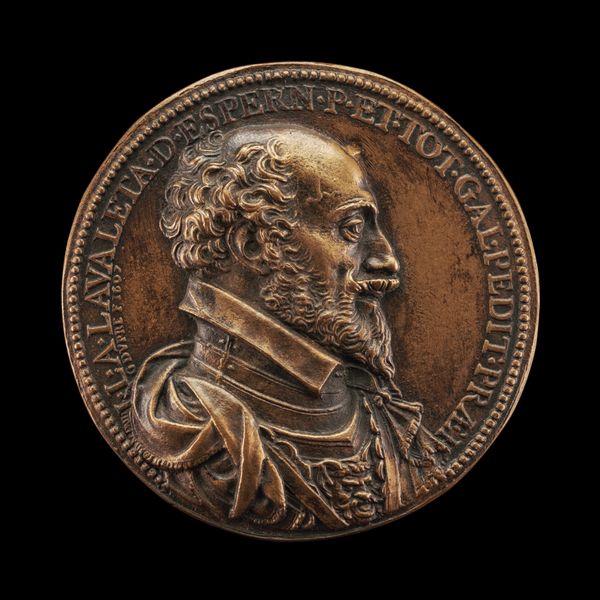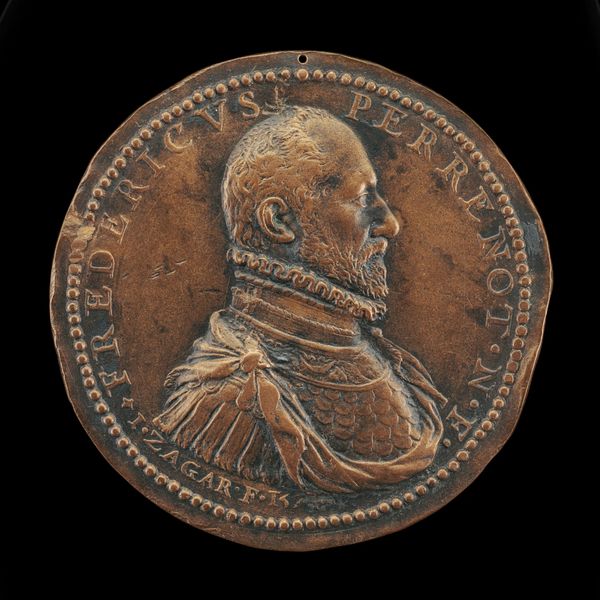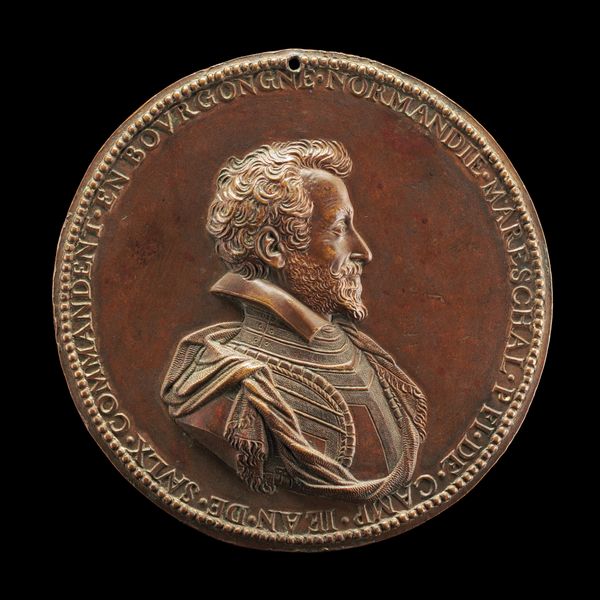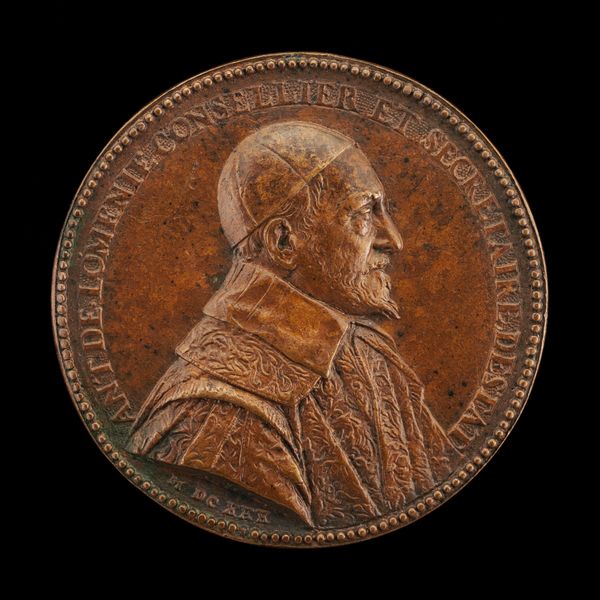![Sir Richard Shelley, c. 1513-c. 1589, Prior of England in Malta and Turcopolier [obverse] by Bernardo Rantwyck](/_next/image?url=https%3A%2F%2Fd2w8kbdekdi1gv.cloudfront.net%2FeyJidWNrZXQiOiAiYXJ0ZXJhLWltYWdlcy1idWNrZXQiLCAia2V5IjogImFydHdvcmtzLzMzMDNiOWViLWJhMGYtNDkzMi1hNjYwLTUxNDA5ZDMwM2I4OS8zMzAzYjllYi1iYTBmLTQ5MzItYTY2MC01MTQwOWQzMDNiODlfZnVsbC5qcGciLCAiZWRpdHMiOiB7InJlc2l6ZSI6IHsid2lkdGgiOiAxOTIwLCAiaGVpZ2h0IjogMTkyMCwgImZpdCI6ICJpbnNpZGUifX19&w=3840&q=75)
Sir Richard Shelley, c. 1513-c. 1589, Prior of England in Malta and Turcopolier [obverse] after 1577
0:00
0:00
metal, bronze, sculpture
#
portrait
#
medal
#
metal
#
sculpture
#
bronze
#
11_renaissance
#
sculpture
Dimensions: overall (diameter): 7.03 cm (2 3/4 in.) gross weight: 134.51 gr (0.297 lb.) axis: 12:00
Copyright: National Gallery of Art: CC0 1.0
Curator: Looking at this piece, my immediate response is solemnity, wouldn't you say? The bronze, the inscription... it speaks of weighty matters. Editor: Weighty literally, too! Bronze isn't light. This is a portrait medal of Sir Richard Shelley, dating from after 1577. The artist, Bernardo Rantwyck, really captured a certain… gravitas. Curator: Gravitas indeed. Notice how the profile, gazing eternally to the right, bears the mark of a stoic resignation or devout dedication. We have "RICARDVS. SCOLLEIVS. PRIOR. ANGLIAE" inscribed—his name and title as Prior of England. The text wraps the image, tethering him to identity and authority. Editor: I am wondering about that bronze—the lost-wax casting method was quite common at the time. Think about the sheer labor involved: from creating the initial model, probably in wax or clay, to the intense heat and careful pouring of the molten metal. I also noticed the small piercing at the top that indicates this bronze cast was meant to be hung or displayed. A conscious piece, crafted for long viewing, remembrance, honor… Curator: Precisely. The circular form lends itself to the notion of completeness, perhaps even a divine unity. Then, the image itself becomes charged with significance, more than just a record of physical appearance. The Maltese Cross prominent on his breast is a bold emblem of faith and fealty. Editor: And there he is, Sir Richard. Garbed in armor! But his sleeves appear softer, almost fabric-like around the wrists, creating a sense of luxury—he's protected and powerful. This piece gives tangible form to honor through skillful deployment of material. Curator: You've nailed it. I agree that this portrait captures his identity through materials, offering a chance to contemplate Sir Richard Shelley and how historical identity takes physical form through resonant symbolism. Editor: Yes! A man represented materially. Thinking about labor and the final product together opens avenues to social and art history otherwise invisible in painting and similar mediums.
Comments
No comments
Be the first to comment and join the conversation on the ultimate creative platform.
